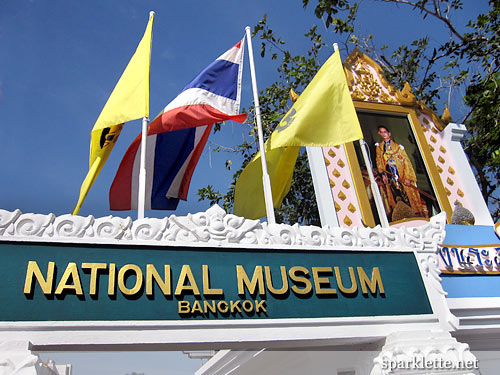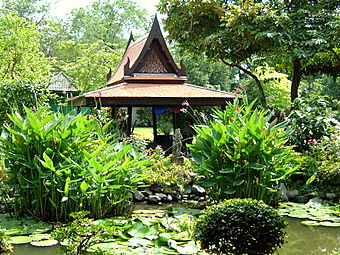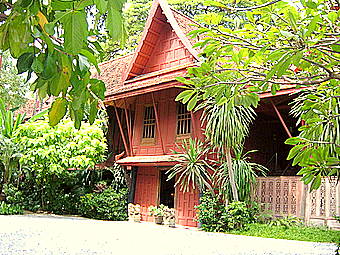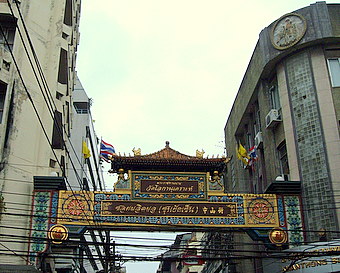One of the most popular destinations in Asia to visit over recent years has been Thailand. This of course has also coincided with the booming popularity of Thai cuisine around the world. Bangkok, the capital city of Thailand, is the main entry point where the vast majority of tourists to Thailand will use.
Bangkok is a very interesting city because in addition to the usual modern buildings of offices, hotels and shopping centers, there are also about 400 exotic Thai temples that seem to stick out among the urban landscape. There are Thai citizens on the streets dressed in modern business clothing as well as Buddhist monks in saffron robes. Yet this is what part of Thailand is. The traditional mixed in with the modern. In fact, it’s the traditional attractions that make Thailand so magical. The temples are sights that one just cannot see in the western world. They are like objects that popped out of an Asian fairy tale.
Like many other large Asian cities, Bangkok is congested with traffic, people and pollution. In fact, the air can be bad enough that there are locals wearing surgical masks in the streets. With an average annual temperature of 28 degrees Celsius or 83 degrees Fahrenheit, it can be somewhat uncomfortable outside for some tourists, especially those from northern climates. Also beware that there will be people on the streets who will try to hustle tourists and direct them to their own businesses and tours. But unlike places in the Caribbean, Thais are polite and not aggressive people. For example, once upon arrival at the international airport, there will be people within the terminal including the ones at the booths who will be offering taxi transportation to your hotel. Although these are legit, they will charge a premium compared to the taxis waiting outside the terminal. There is a similar situation at the hotels. The taxis waiting right outside the main hotel entrances do seem to quote more than those waiting on the side streets just further down. The three-wheeled ‘tuk tuk’ vehicles also vary a lot so it may be wise to ask for quotes from a few drivers rather than taking the first one you see. The tuk tuks are a fun ride by the way so they should be experienced at least once while in Bangkok. The city also has various public buses and river taxis which are long boats used on the river canal system. A nice way to spend some time is to take a ride on one of these river taxis to cruise the canals which some refer to as the ‘Venice of the East’.
The Grand Palace is probably the most visited attraction in Bangkok. This complex is surrounded by walls built in 1783 and contains government offices, royal residences monuments and the Emerald Buddha Chapel. The Royal Chapel which contains the Emerald Buddha is the monarch’s private chapel. The Buddha itself is actually a one piece jade sitting on top of a golden altar. It’s not a large Buddha but it is very special. Apparently, they change the Buddha’s clothing which is also made of gold on a seasonal basis. There are numerous monuments on the grounds that are dedicated to past monarchs. Walls with large mythological scenes are displayed throughout. The buildings and monuments within the Grand Palace have some very striking colors including golds and greens. Gold color is used quite a lot and the distinctively curved Thai roofs on the buildings are very detailed. Equally stunning are some of the interiors of these buildings with their magnificent rooms and halls used for different ceremonies and events. Some of these halls have special royal altars.
One temple not to miss is Wat Pho which is the Temple of the Reclining Buddha. It features a giant Buddha lying on its side. Even the soles of this Buddha’s feet have very intricately detailed designs. Other nice temples to see are Wat Arun (Temple of Dawn) and Wat Benchamabophit (Marble Temple). The Wat Pho temple has traditional Thai massage services which are very popular among tourists. Other temples such as Wat Mahathat and Wat Parinayok also have Thai massages available. The Royal Barges or long boats which are used during ceremonies on the river are also nice to see. The details put into decorating these boats are just remarkable.
For wildlife enthusiasts, there’s the Pasteur Institute’s Snake Farm where poisonous snakes are fed daily and visitors can watch handlers milk cobras for their venom. There is also the world’s largest Crocodile Farm. The national sport of Thai kickboxing can be seen at two different stadiums in Bangkok. Both the Ratchadamnoen and Lumphini stadiums feature events throughout the week on different days. Thai theatre and traditional dance are very interesting to watch as cultural entertainment. These can be seen at theatres as well as some of the top hotels in the city.
Bangkok has some good shopping opportunities especially for jewelry, handicrafts and textiles including silks as well as cottons. As in other locations in Asia, vendors in the streets will expect some bargaining of prices where the retail stores have fixed prices. Just like in Hong Kong, Bangkok has many custom tailors who can make suits, shirts and dresses for clients within 24 hours. Some will even delivery the finished clothing to your hotel free of charge.
There are some general guidelines of etiquette in Thailand that should be followed by all visitors. The Thai royal family is revered in this country so no outsider should ever make any even slightly negative remarks about the country’s monarchy. Temples should not be entered unless one is covered with long pants or skirts. Shorts and shoulderless tops are not permitted in temples. Footwear is always removed prior to entering any temple. Images and statues of Buddha, even postcards, are considered sacred in Thailand so one should never climb on one or do anything that will show disrespect. Public displays of affection between men and women are also frowned upon. Of course this seems to be a complete contradiction to Bangkok’s famous red light and adult entertainment districts such as Patpong. But this is yet another example of the contrast that’s found in Thailand.
The attractions in Bangkok warrant a few days stay in the city before heading out to other parts of Thailand where there’s much less pollution and more beautiful natural scenery. Bangkok has good air connections with other Asian destinations as well so it can easily be fit into a larger tour of Asia.










